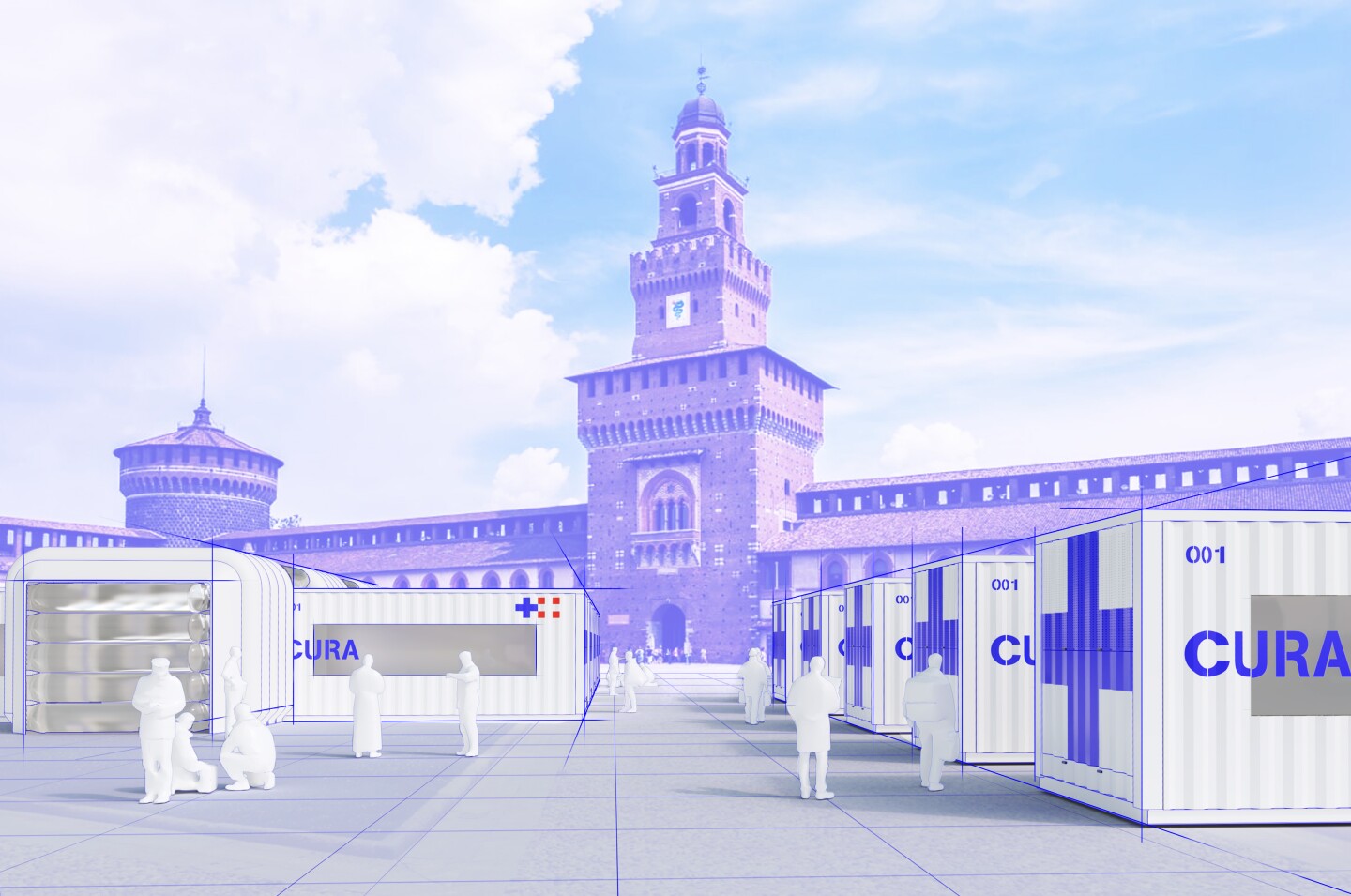We’ve reported on shipping containers being used for lots of different projects before, such as swimming pools, bars, and houses, but Connected Units for Respiratory Ailment (CURA) is an example that could potentially save lives. It involves transforming the metal boxes into easily transportable intensive care units (ICU) that can be shipped worldwide to help those in need of treatment as COVID-19 continues to spread.
CURA is being developed by a team that includes Carlo Ratti Associati, Italo Rota, Studio FM Milano, Humanitas Research Hospital, Jacobs, Squint/opera, and others. It's open-source and is built from standard 20 ft (6.1 m) long shipping containers that we’d assume are either new or very carefully and thoroughly cleaned. The containers are modified with windows and entrances and then joined onto a larger inflatable structure to create modular configurations in different sizes as needed, from four beds to over 40.
While doctors already have hospital tents at their disposal for these kind of emergency situations, the team reckons that CURA would (with the correct equipment installed) offer a benefit over tents by creating a negative room pressure system. Put simply, the negative room pressure means that air flows into the containers but not out, helping to mitigate the risk of further spreading the virus. The system is often used in traditional brick-and-mortar isolation wards.

The project envisions placing some units next to hospitals, such as in parking lots, for example, to expand ICU capacity, while others could be used to create field hospitals. It would also make use of shipping containers' easy transportation to move them around on trains, trucks and ships.
Of course, somewhere to put the patients is just a part of the battle and having the ventilators and other medical kit necessary, plus the specialists required to actually use them properly, is also crucial. That said, the first prototype CURA is currently being constructed for use in a hospital in Milan, with a view to eventually sending them out around the world.
Source: Carlo Ratti Associati









